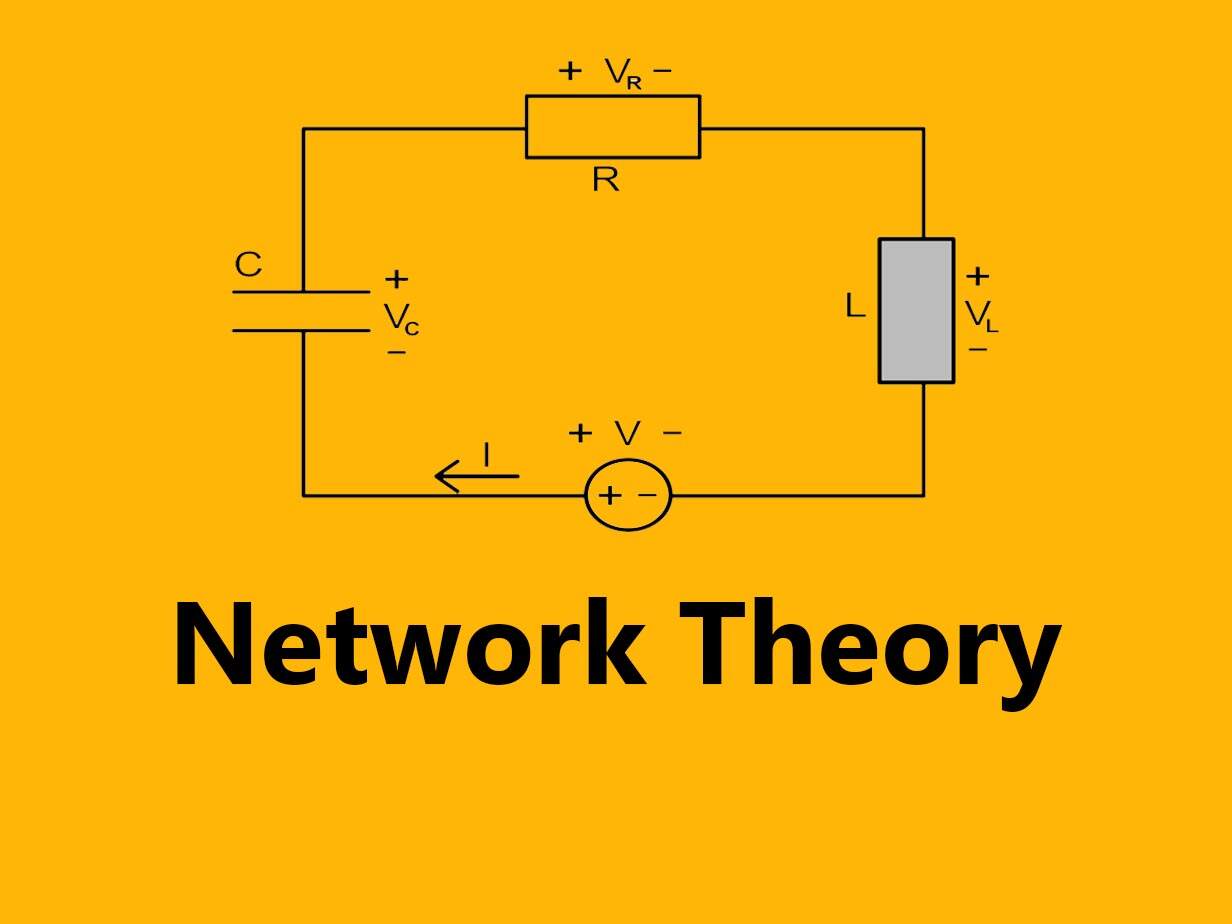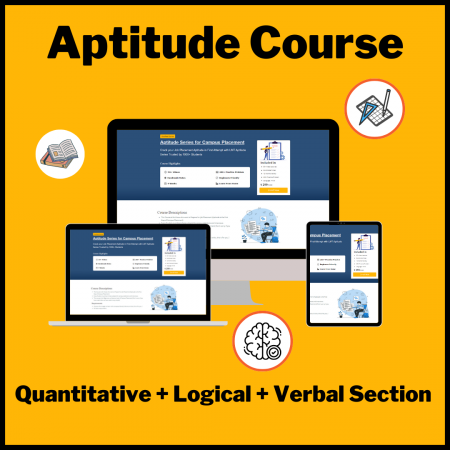Network Theory
Free

-
Index
- Sources
- Mesh Analysis
- Maximum Power Transfer
- Thevenin and Norton Theorem
- Node Analysis
- Superposition Theorem
- Conductively Coupled Circuit
- Coupled Circuit
- Dot Convention
- Inductance Series Parallel
- Self and Mutual Inductance
- Transient Response Of RC Circuit
- Transient Response Of RL Circuit
- Transient Response Of RLC Circuit
- Foster I Form
- Foster II Form
- Frequency Domain Representation
- Hurwitz Polynomials
- Inter Relationship
- Poles and Zeros
- Y Parameter
- ABCD Parameter
- Resistiye Bridged T-Network
- Cauer-I Form
- Cauer-II Form
- Driving Point Function
Network Theory
Pre-requisite of the subject Network Theory is Basic Electrical Engineering, Engineering Mathematics II Course Objectives of the subject Network Theory is to evaluate the Circuits using network theorems. To analyze the Circuits in time and frequency domain. To study network Topology, network Functions and two port networks. To synthesize passive network by various methods. Course Outcomes of the subject Network Theory is that After successful completion of the course student will be able to Apply their knowledge in analyzing Circuits by using network theorems. Apply the time and frequency method of analysis. Evaluate circuit using graph theory. Find the various parameters of two port network. Apply network topology for analyzing the circuit. Synthesize the network using passive elements.
Network topology is the arrangement of the elements (links, nodes, etc.) of a communication network. Network topology can be used to define or describe the arrangement of various types of telecommunication networks, including command and control radio networks, industrial field busses and computer networks. Network topology is the topological structure of a network and may be depicted physically or logically. It is an application of graph theory wherein communicating devices are modeled as nodes and the connections between the devices are modeled as links or lines between the nodes. Physical topology is the placement of the various components of a network (e.g., device location and cable installation), while logical topology illustrates how data flows within a network. Distances between nodes, physical interconnections, transmission rates, or signal types may differ between two different networks, yet their logical topologies may be identical. A network’s physical topology is a particular concern of the physical layer of the OSI model. Network theory is the study of graphs as a representation of either symmetric relations or asymmetric relations between discrete objects. In computer science and network science, network theory is a part of graph theory: a network can be defined as a graph in which nodes and/or edges have attributes (e.g. names). Network theory has applications in many disciplines including statistical physics, particle physics, computer science, electrical engineering, biology,economics, finance, operations research, climatology, ecology, public health, and sociology. Applications of network theory include logistical networks, the World Wide Web, Internet, gene regulatory networks, metabolic networks, social networks, epistemological networks, etc.
Module Electrical circuit analysis consists of the following subtopics Circuit Analysis: Analysis of Circuits with and without dependent sources using generalized loop and node analysis, super mesh and super node analysis technique Circuit Theorems: Superposition, Thevenin‟s, Norton‟s and Maximum Power Transfer Theorems (Use only DC source).Magnetic circuits: Concept of Self and mutual inductances, coefficient of coupling, dot convention, equivalent circuit, solution using mesh analysis (for Two Loops only) Objectives of graph theory, Linear Oriented Graphs, graph terminologies Matrix representation of a graph: Incidence matrix, Circuit matrix, Cut-set matrix, reduced Incident matrix, Tieset matrix, f-cutset matrix. Relationship between sub matrices A, B & Q. KVL & KCL using matrix. Module Time and frequency domain analysis consists of the following subtopics Time domain analysis of R-L and R-C Circuits: Forced and natural response, initial and final values. Solution using first order and second order differential equation with step signals. Frequency domain analysis of R-L-C Circuits: Forced and natural response, effect of damping factor. Solution using second order equation for step signal. Module Network functions consists of the following subtopics Network functions for the one port and two port networks, driving point and transfer functions, Poles and Zeros of Network functions, necessary condition for driving point functions, necessary condition for transfer functions, calculation of residues by graphical methods, testing for Hurwitz polynomial. Analysis of ladder & symmetrical lattice network (Up to two nodes or loops). Module Two port Networks consists of the following subtopics Parameters: Open Circuits, short Circuit, Transmission and Hybrid parameters, relationship among parameters, conditions for reciprocity and symmetry. Interconnections of Two-Port networks T & π representation. Module Synthesis of RLC circuits consists of the following subtopics Positive Real Functions: Concept of positive real function, necessary and sufficient conditions for Positive real Functions. Synthesis of LC, RC & RL Circuits: properties of LC, RC & RL driving point functions, LC, RC & RL network Synthesis in Cauer-I & Cauer-II , Foster-I & Foster-II forms (Up to Two Loops only).
Suggested Texts Books for the subject Network Theory by Mumbai university are as follows Franklin F Kuo, “Network Analysis and Synthesis”, Wiley Toppan, 2 nd ed.,1966. 2. M E Van Valkenburg, “Network Analysis”, Prentice-Hall of India Pvt Ltd, New Delhi, 26th Indian Reprint, 2000. Suggested Reference Books for the subject Network Theory by Mumbai university are as follows 1. A. Chakrabarti, “Circuit Theory”, Dhanpat Rai & Co., Delhi, 6th Edition. 2. A. Sudhakar, Shyammohan S. Palli “Circuits and Networks”, Tata McGraw-Hill education. 3. Smarajit Ghosh “Network Theory Analysis & Synthesis”, PHI learning. 4. K.S. Suresh Kumar, “Electric Circuit Analysis” Pearson, 2013. 5. D. Roy Choudhury, “Networks and Systems” , New Age International, 1998.
Prepare For Your Placements: https://lastmomenttuitions.com/courses/placement-preparation/
![]()
/ Youtube Channel: https://www.youtube.com/channel/UCGFNZxMqKLsqWERX_N2f08Q
Follow For Latest Updates, Study Tips & More Content!
Course Features
- Lectures 26
- Quizzes 0
- Duration 50 hours
- Skill level All levels
- Language English
- Students 442
- Certificate No
- Assessments Yes


![SEBI GRADE A – IT 2025 SEBI GRADE A 2025 – IT [ Phase 1 + Phase 2 ]](https://lastmomenttuitions.com/wp-content/uploads/2025/12/SEBI-GRADE-A-IT-2025-450x450.png)
